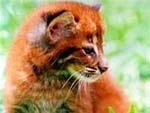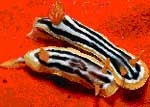This is a venomous snake belonging to the viper family, known for its stunning coloration but extreme danger.
Bitis is a genus of venomous snakes in the viper family found in Africa and the southern Arabian Peninsula, including a particularly fearsome species in Africa that is responsible for the highest number of fatalities compared to other snake species: Bitis nasicornis.
The “Death” Snake of Africa
Bitis nasicornis, also known as the Rhinoceros viper or river jack, is a beautifully colored snake with vibrant hues, but it is also extremely venomous. When threatened, it often inflates and deflates its body while emitting a loud hissing sound.

Rhinoceros viper with a “death” mark on its head. (Photo: Imgur).
It is also referred to as the Rhinoceros viper because of the pair of horns (deformed scales) on the front of its snout that resemble a rhinoceros horn. These snakes typically inhabit rainforests and swamps in West and Central Africa, becoming a source of fear for local people.
If you closely observe their heads, you will notice a triangular black pattern that resembles a “death” mark (see image above), further adding to the terrifying appearance of this viper species.
This snake can grow to a length of 70 to 90 cm, with some individuals reaching up to 1.3 m. Like other vipers, it features triangular, rectangular, or diamond-shaped patterns throughout its body.
Its appearance is quite similar to its “brother,” the Gaboon viper, but the Rhinoceros viper boasts much more vibrant and beautiful colors, including striking shades of red, yellow, green, blue, and black.
Highly venomous Bitis viper. (Source: Youtube/Jonas Arvidsson).
Bitis nasicornis is primarily nocturnal and mostly terrestrial, although it can also be found in aquatic environments or high up in trees. Despite its slow movement, it can strike its prey quickly and decisively.
This venomous snake injects a lethal dose of venom to immobilize its prey before swallowing it whole. They are incredibly patient when ambushing prey and strike with remarkable speed. Their primary diet consists of rodents, frogs, fish, and more.

Colorful and beautiful patterns of the viper. (Photo: Galileo Ramos).
Their patterns and skin coloration help them camouflage, allowing them to hide among fallen leaves or forest floors, making them difficult to detect. Their bodies are robust and muscular, especially when they puff up to intimidate threats.
Its venom can cause internal bleeding, tissue destruction, and attacks on the circulatory and nervous systems, leading to rapid fatalities for victims.





















































